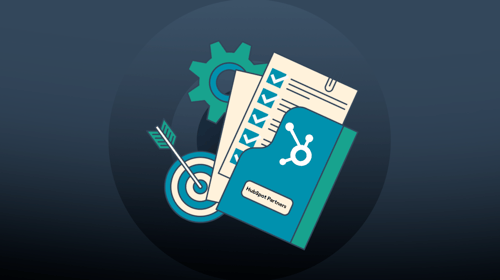What is headless content management? And what are the advantages of a headless approach compared with traditional, monolithic CMS systems? Keep reading and find out, as we explore the ins and outs of headless content management.
Did you know that 43% of all websites are hosted on WordPress? Like Drupal, Kentico, and Squarespace, WordPress is a traditional Content Management System (CMS) that stores all content in a single back-end system. Content is then delivered to users over a front-end graphical user interface such as a website.
These traditional systems are called ‘monolithic’ because data is stored within and distributed from a single system. The monolithic approach has dominated content management for over three decades. But the status quo is shifting. In 2015, WordPress co-founder and tech wonderchild Matt Mullenweg boldly predicted that the internet’s future lay in API-driven interfaces — AKA, headless content management.
While Mullenweg’s prediction hasn’t come to pass, organisations are increasingly adopting headless CMS systems. Let’s explore why.
The headless approach to content management
Unlike a monolithic CMS like WordPress, headless CMSs are not directly connected with a front-end. That means that headless CMSs have no impact on how content is presented to the viewer. Rather, headless CMS exclusively handles back-end content management. This seems like a restriction until you consider the limits of monolithic CMS.
As monolithic CMS both stores and delivers content, content creation and content presentation code are intertwined like a jumble of spaghetti. This makes traditional CMS ideal for a single-site solution. But what if you want to use the same CMS to publish content over multiple websites and digital media?
Plug-ins can make this possible, but the results can be messy. Essentially, these plug-ins need to extract content from a jumble of code and then rework that content to fit the parameters of another medium. A lot can go wrong, which is why developers have a word for systems like this: software gore.
Headless CMS solves this problem by focusing solely on content creation and editing, and not on how content is presented to users. So none of the spaghetti gets clumped together.
Headless systems then use APIs to deliver content to multiple end-points. This can improve how content is enjoyed, as dedicated APIs tailor content to the design and layout specifications of different devices and channels.
That’s how a headless system works. Now let’s explore the advantages of this approach.
The benefits of headless CMS
-
Content loads faster — did you know that conversion rates drop by up to 5% for every second it takes your website to load? The lesson is clear: the faster pages load, the more likely prospects will engage with your content. Monolithic CMS laboriously recreates content piece by piece according to channel and device type, much like laying out the track as you go. Comparatively headless CMS delivers content along a smooth rail, and at blazing speeds.
-
Greater developer freedom — with the content being delivered over APIs, developers can choose their own front-end frameworks and tools. Developers can also focus on crafting impressive presentation layers without worrying about back-end constraints.
-
Superior omnichannel experiences — from IoT platforms and smartwatches to wide-screen computer displays, headless CMS enables you to deliver the same engaging content across multiple touchpoints and channels. With the right API support, content is tailored to each digital experience.
-
Easily scalable — as businesses scale and add more functionality to their sites, website and content challenges begin to compound. Plug-ins, for instance, might be introduced to add A/B testing, chatbots, or user authentication. The more that is added, the more unwieldy content distribution becomes. Headless CMS limits complexity by providing a single point to access and change content, without prescribing how content is delivered. This ensures that content is modular, neatly organised, easier to update, and inoculated against issues caused by front-end maintenance or broken plug-ins.
-
It’s more secure — traditional CMS systems rely on plug-ins that require access to the content base. Each access point poses a security risk. With headless CMS, the presentation layer isn’t connected to the database and there’s only one endpoint to access data. This presents fewer points of attack for bad actors.
Off with your (CMS’s) head!
Back in 2015, when Matt Mullenweg first predicted a bright future for API-driven content systems, few agencies had the skills or experience to help businesses migrate to a headless system. Fortunately, more and more headless CMS services have popped up, so it’s never been a better time to embrace a headless approach to content management.
At Huble, we’ve pioneered a strategy for turning HubSpot into a headless CMS. This is ideal for organisations who want to use HubSpot CMS’s advanced features to create gorgeous, dynamic, and sophisticated websites while also leveraging the advantages of a headless system.
Whether you’re looking to turn HubSpot into a headless CMS, or you’re looking for a more traditional CMS with high levels of personalisation, our in-house development team can help.
Get in touch and discuss your needs with our team. We can talk about how our tailored services can meet your requirements.









-3.png?width=500&height=320&name=Matt%20-%20imagery%20bank%20(8)-3.png)

